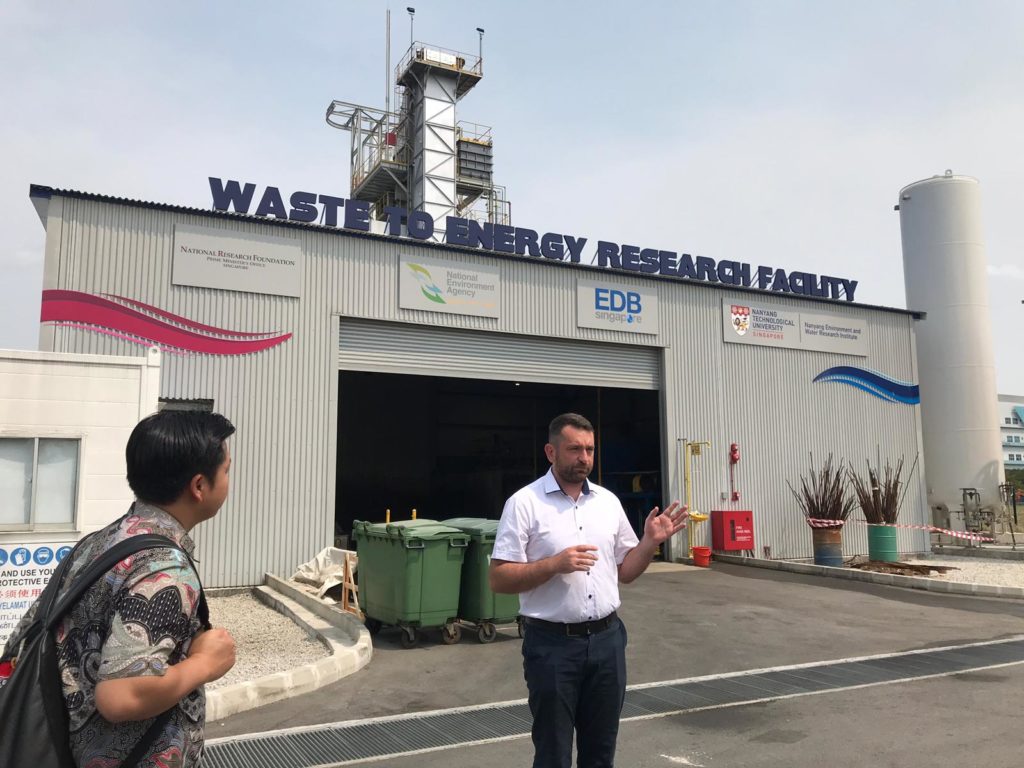By Natalie Kennedy
Cutting edge technologies to support a more circular economy
As residents of an archipelago, APC’s Indonesian members are increasingly looking for new innovations to address the challenge of how to help communities deal with waste.
In 2015, Science Magazine flagged Indonesia as being second only to China as the largest contributor to global mismanaged plastic waste, and while the government is making strides with new policies addressing the 140% increase in imported plastic waste reported in 2018 (mostly from Western countries) contributing to the supply problem, there are signs that the improper treatment of post-consumer plastic is having significant ramifications, including reports of toxicity in the food chain and health issues in communities near dumpsites.
With these issues in mind, 12 APC members and their foundation staff from Indonesia came to Singapore in August, in order to see the cutting edge technologies being developed by Nanyang Environment & Water Research Institute (NEWRI) at Nanyang Technological University. NEWRI was established in 2009 with the express purpose of developing new technologies and taking them to practice, where teams develop new IP, work with partners to scale this up, and ultimately impact the broader environment. Ten years later, it is globally ranked among the top research and technology organisations in the environment and water domain.

Prof. Shane Snyder, Executive Director of NEWRI, welcomed the group and shared an overview of the portfolio of technologies being developed. He challenged the group to rethink their view of waste as a discard and instead consider its potential asset value. For example, with Singapore’s landfill at Semakau Island filling up rapidly, Prof. Shane described the possibility of using “octopus polymers” – reusable polymer sorbents being developed at NEWRI – which can effectively mine waste for heavy metals and high-value substances.
In the area of resource recovery, NEWRI is developing other new technologies and processes which would convert waste – especially “problem plastics” which are mixed or contaminated with other materials such as inks – to energy and/or higher-value products. This includes conversion of ash waste to construction materials, or a new pyrolysis process which would allow for mixed inputs (including difficult-to-recycle inputs such as plastics with ink laminates) to be recycled into higher-value outputs such as carbon nanotubes.
The challenge ahead is building beyond-prototype and demonstrating the new technologies in the field, in order to make a business case for recycling the problem plastic that is not currently being targeted for recycling. System viability would require a significant amount of input, at least two tons (but ideally, closer to twenty tons) of plastic per day. While this level of scale may be difficult in Singapore, APC members from Indonesia were keen to discuss potential collaborations.
Beyond the drive to break new scientific ground is the social mission side of NEWRI. While this is multi-faceted, Prof. Shane discussed with the group NEWRI’s intention to do more with rural communities in Asia, for small scale systems to deal with solid waste. These solutions could address the challenges facing the communities of Indonesia’s coastal population of 188 million people.
The group later visited NEWRI’s waste-to-energy plant in Tuas, where NEWRI has set up a facility which allows commercial partners to snap in their own devices or technologies as part of a modularized system. “Kind of like LEGOs,” said someone on the tour. Sort of, except LEGOs are made of, well, plastic.
